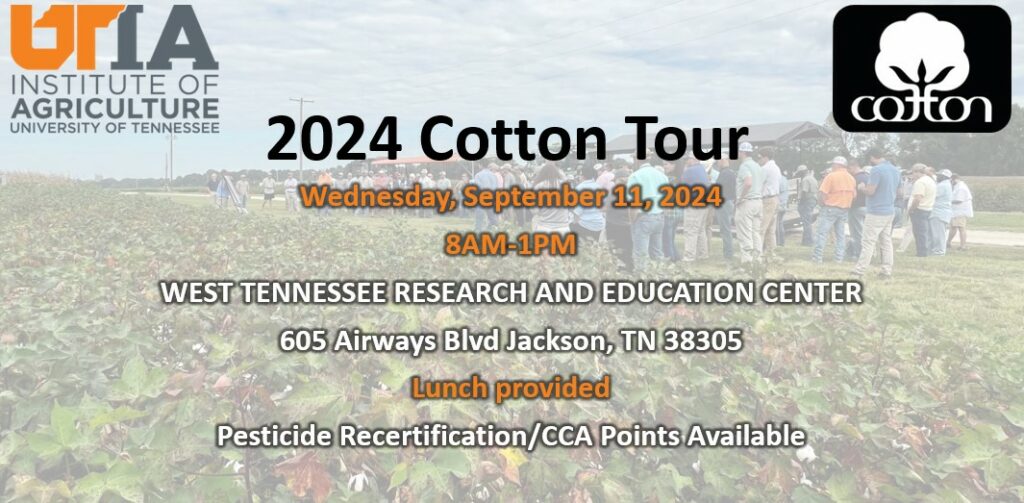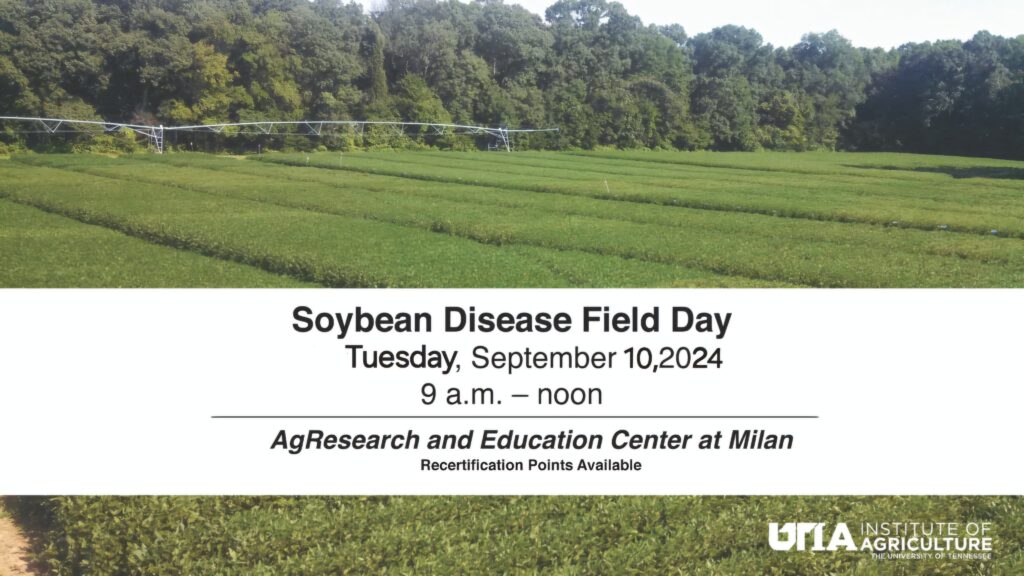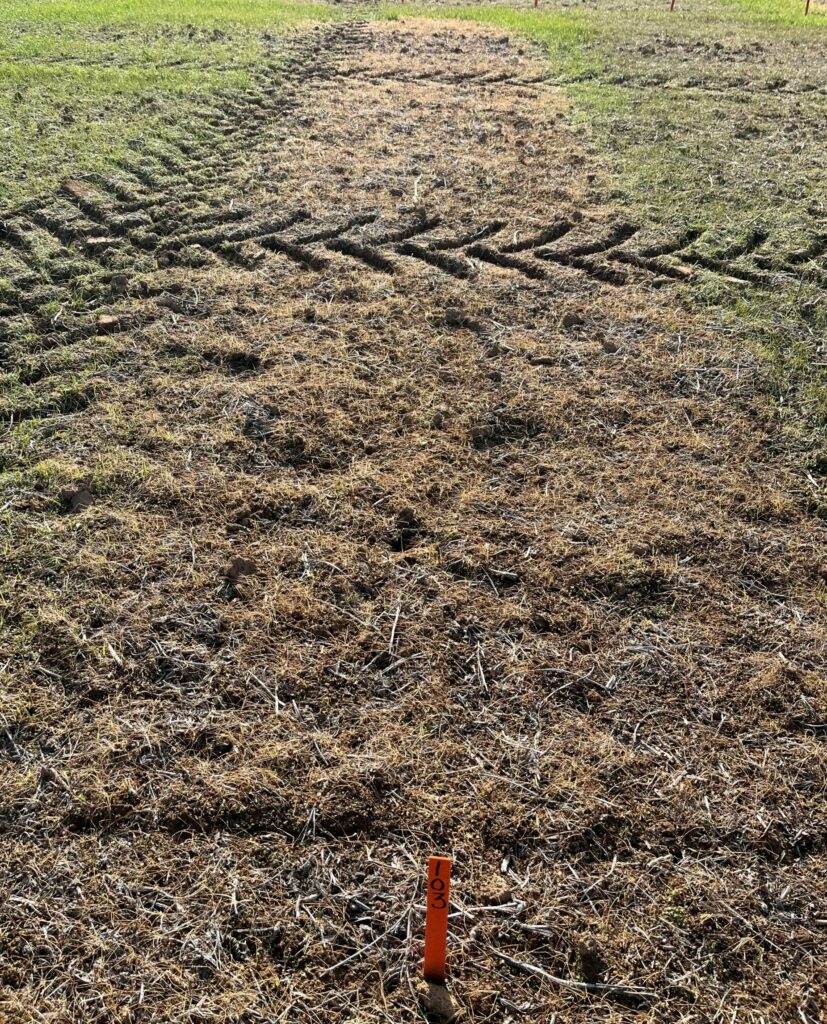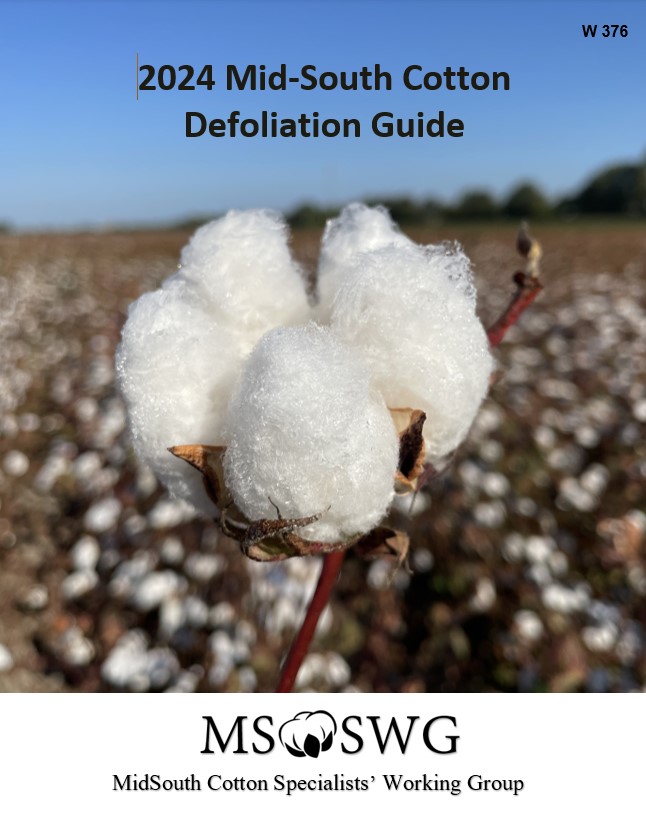 The 2024 UT Cotton Tour is NEXT WEDNESDAY, Sept. 11 at the West Tennessee Research and Education Center (605 Airways Blvd, Jackson, TN 38305). Pesticide recertification and CCA points will be available. Tulum will be catering lunch for us.
The 2024 UT Cotton Tour is NEXT WEDNESDAY, Sept. 11 at the West Tennessee Research and Education Center (605 Airways Blvd, Jackson, TN 38305). Pesticide recertification and CCA points will be available. Tulum will be catering lunch for us.
We will be spraying a defoliation demo tomorrow at the experiment station that will be along the tour route. Additionally, we will have presentations from Dr. Sebe Brown on insect control, Dr. Larry Steckel on weed control, Dr. Heather Kelly on diseases, Dr. Avat Shekoofa on irrigation response, and Dr. Nutifafa Adotey on a fertility update. I’m very happy to report the slate of speakers will again include Dr. Jake McNeal, our new Corn and Soybean Specialist who started last spring. He will make a few comments about a few of the research trials he has established at WTREC and some preliminary results from a soybean desiccation study. The agenda for the event can be found by following this link. Look forward to seeing you there!




